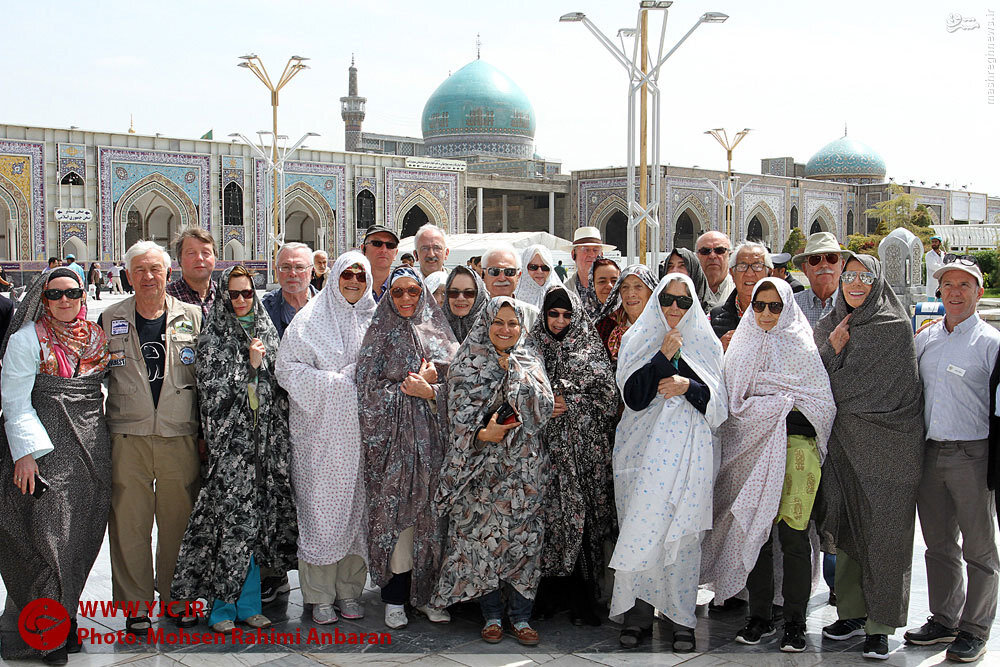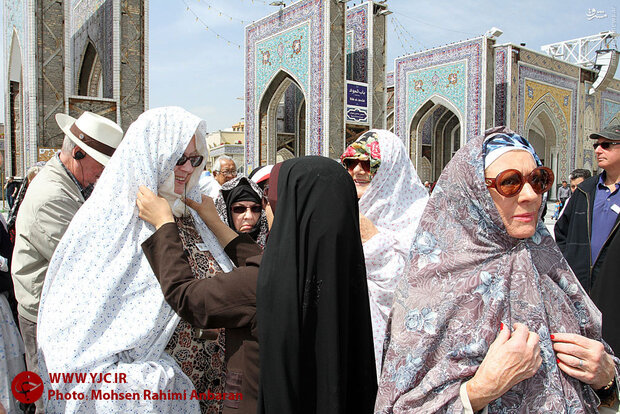Half a million pilgrims visit Imam Reza shrine per day

TEHRAN – The holy shrine of Imam Reza (AS), the eighth Shia Imam, hosts an average number of 500,000 pilgrims each day.
Some 500,000 people go on a pilgrimage to the holy shrine per day… and in this regard, Astan Quds Razavi tries to do its best to ensure the well-being of the pilgrims, an official with the administrative organization which manages the shrine complex and other associated institutions said on Sunday.
The spiritual tradition of pilgrimage to the holy shrine along with sustained efforts to safeguard hospitality services for Razavi pilgrims may soon join UNESCO’s listing of cultural treasures as Iran has asked the United Nations cultural agency UNESCO to recognize the concept of ‘Good safeguarding practices to improve hospitality services for Razavi Pilgrims’.
As mentioned by the UN cultural body, the rituals and ceremonies merged with the pilgrimage rites are generated based on the social and religious needs and requirements rooted in the public beliefs, the consistency and persistence of which exhibit their significance and values.
Moreover, the tradition of pilgrimage to the holy shrine, which is situated in the northeastern city of Mashhad was registered on the National Intangible Cultural Heritage List by the Ministry of Cultural Heritage, Tourism and Handicrafts last year under the number 2015 upon a proposal offered by the tourism department of Khorasan Razavi province.

Mashhad, the provincial capital, is Iran’s holiest and second-largest city. Its raison d’être is the striking shrine complex of the eighth Shia Imam that is encircled by dozens of five-star hotels and many other accommodation centers. Mashhad and the buffer zone of the complex present a unique approach and exercise towards the development of pilgrimage areas during history concerning a city and its religious core, in a way that the expression of the pilgrimage concept can be vividly seen in the architectural and urban planning of the city.
The Imam Reza complex, in general also in detail enjoys unique creativity and genius, altogether has formed a unique cultural, artistic masterpiece all over the world. The architectural design of the complex has also complied with these traditions and rituals to address the needs of people and the urban landscape. Every year, over 20 million pilgrims visit the holy shrine and perform a set of traditions, one of which is the upper mentioned salutation rituals.
Historical data suggests that the complex has been developed in different stages of time according to the needs of the people and rituals associated with the holy shrine, yet the structure, design concepts, forms, material, tangible and intangible aspects, morphology, entering circumstances, praying rites and the spirit of the complex retained its authenticity and integrity the whole time and with legal and religious support of authorities and people.
Regarding the cultural, historic, and architectural aspects, as mentioned by UNESCO, the complex could be comparable with several other religious complexes such as “Saint Peter’s Tomb” in the Vatican, “Mahabodhi Temple” in India, “Mount Emei” in China and “Lumbini” in Nepal.
AFM